The Toucan Barbet is a stunning bird found in cloud forests, characterized by its iridescent shades of red, green, orange, and yellow. Its unique appearance makes it an iconic species.
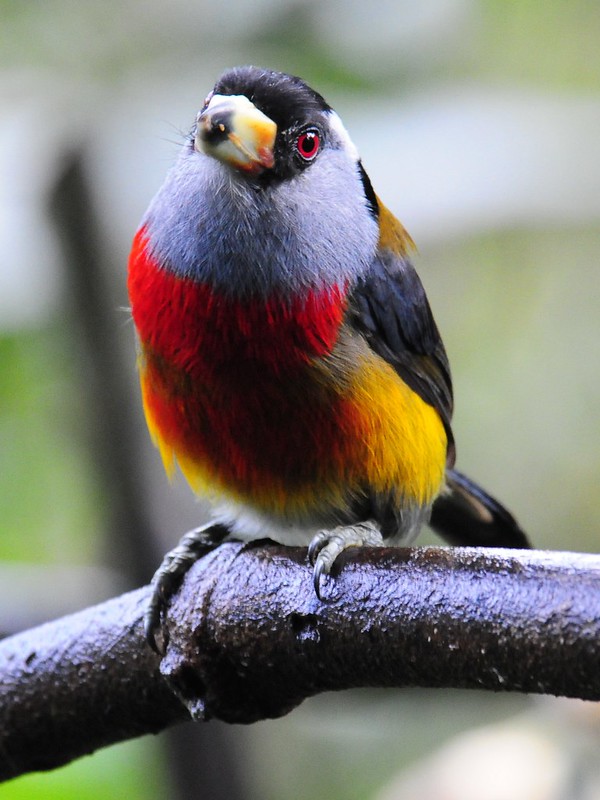
Meet the toucan barbet (Semnornis ramphastinus), a member of the barbet family. These medium-sized, robust birds measure between 19 to 21 cm (7.5–8.3 in) long and weigh between 80-115g (2.8-4.1 oz). Their beaks are sturdy and have a yellow maxilla and light green mandible, both with dark tips. Toucan barbets have colorful plumage that includes a black crown, “mask,” and thin cervical collar. They also have long occipital feathers and a striking white stripe behind their eyes, which contrasts with their bright red-colored iris. The nape of their neck is golden-brown, transitioning to yellow towards the rear. Their throat, upper breast, and sides of the nape are grayish-blue, while their lower breast and middle belly are a vibrant red. Their lower belly is yellowish-green, adding to the toucan barbet’s unique appearance.
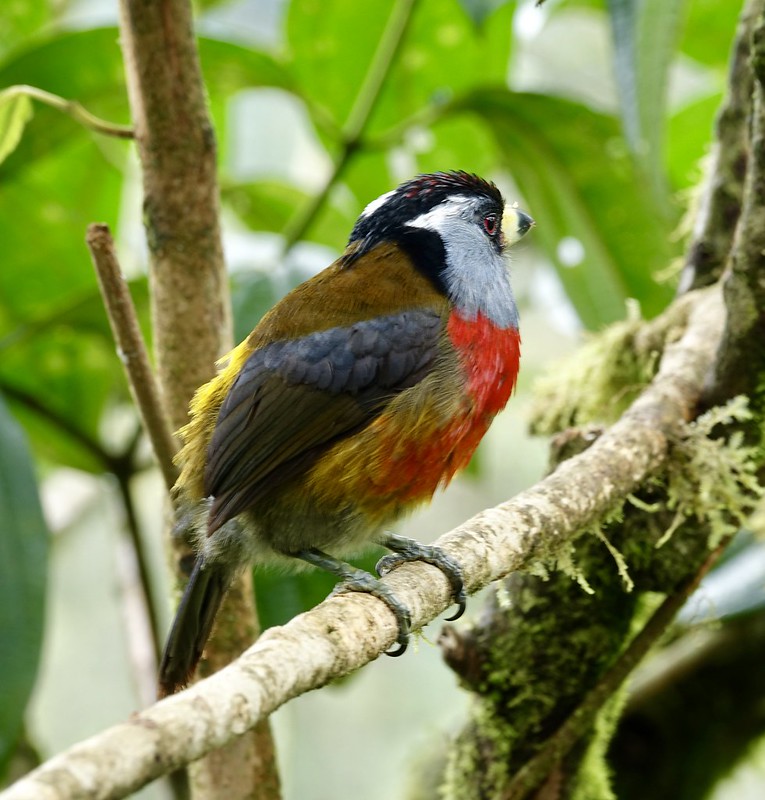
The color of the wings and tail is a shade of grey. The male and female birds have a similar appearance, but the female’s feathers are slightly less vivid.
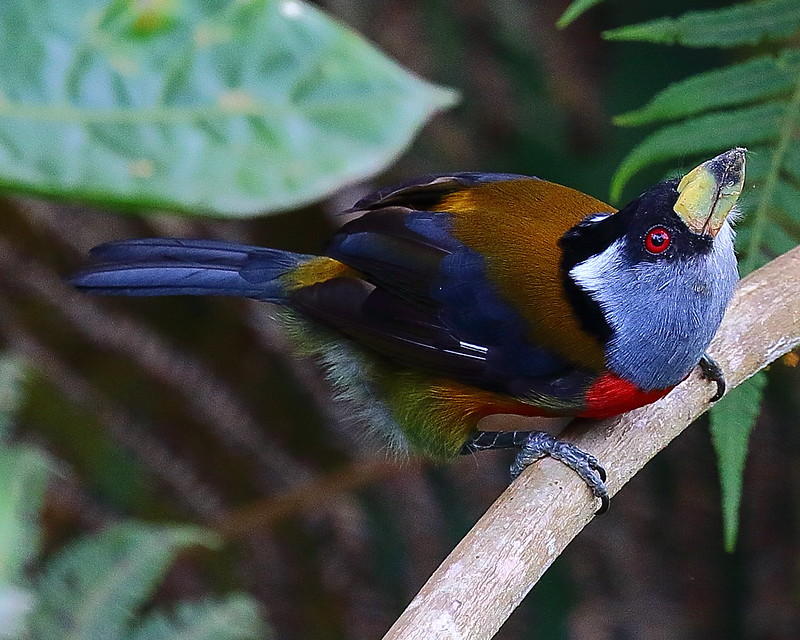
The habitat of this particular creature can be located on the western side of the Andes. Specifically, it can be found in the southern region of Colombia and to the north of Ecuador.
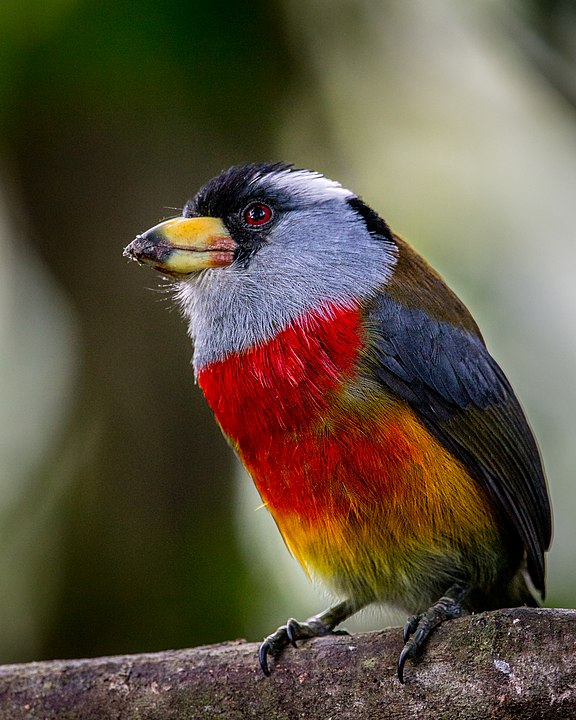
The toucan barbet has a preference for habitats such as mountain evergreen forests, secondary forests, open woodlands, and pastures. They are often found at altitudes ranging between 1,000 to 2,400 meters.
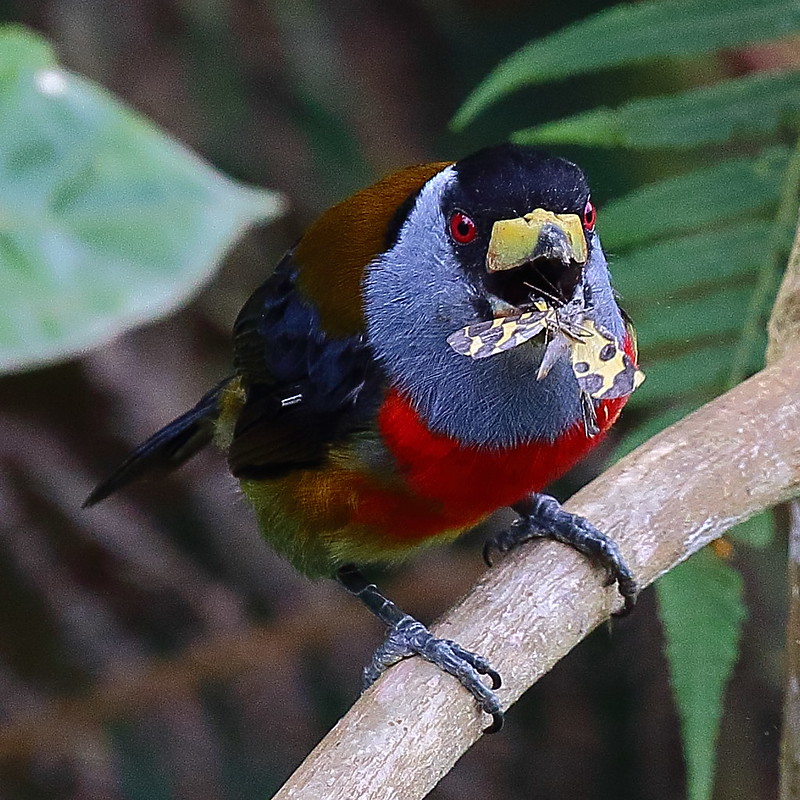
These birds are mostly fruit-eaters, and they have a particular preference for fruits like Cecropia and Ficus. However, they won’t say no to a tasty insect meal if it comes their way.
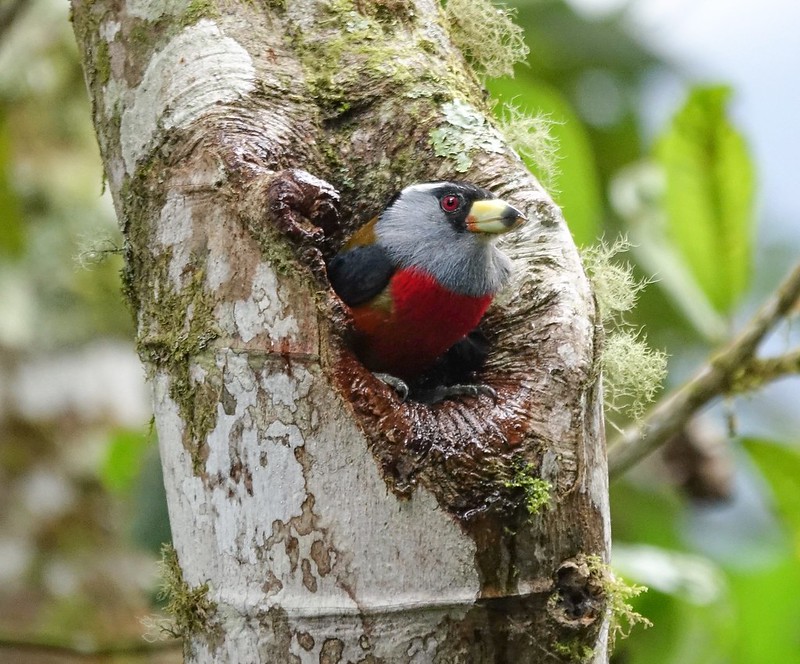
From February to October, Toucan barbets engage in mating. These birds reside in tiny family units consisting of six members at most, which comprise of a mature couple and juveniles that assist in nurturing the next generation. They build nests inside tree hollows, where the female lays 2-3 eggs that are cared for by all members of the group for around 15 days. The chicks are fed by everyone in the group and take flight about 43-46 days after hatching, but they don’t become entirely self-sufficient until four weeks later.
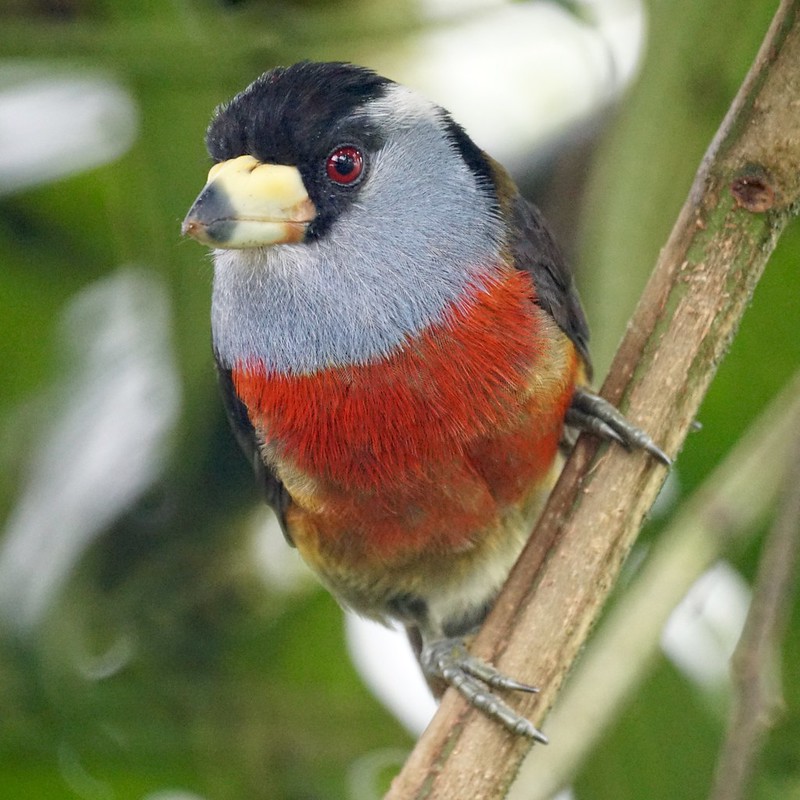
The number of this particular type of animal is decreasing steadily and at a somewhat fast pace. This is mainly because people are capturing them illegally to sell them internationally as pets, and their homes are being destroyed due to various human activities like logging, farming, mining, and settling.
